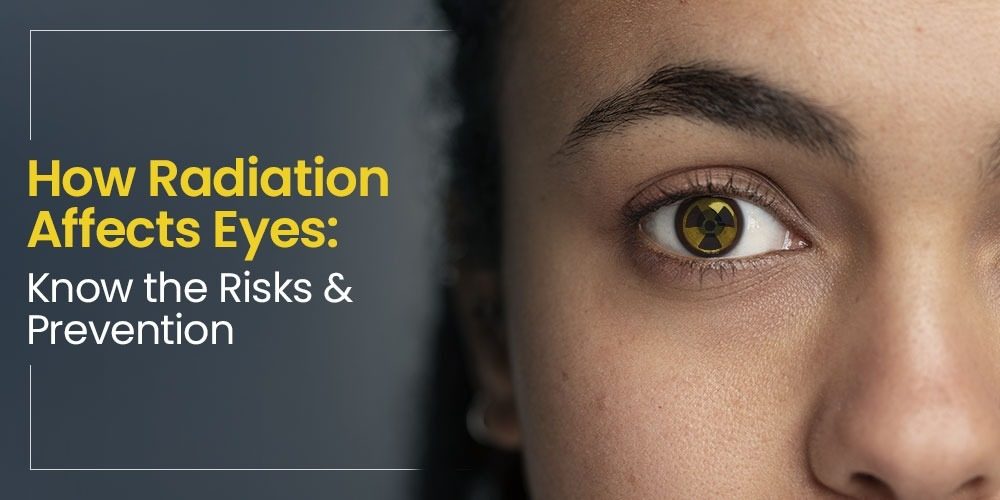Ionizing Radiation, a powerful force harnessed for various medical procedures, can have profound effects on the human body. When it comes to the delicate structures of the eye, these effects must be understood, managed, and prevented. Here, we talk about the causes, symptoms, and measures to protect our precious vision from the potential harms of radiation exposure.
How Radiation Damages the Eyes?
The eye is a delicate organ that includes a network of tissues and cells and is vulnerable to the harmful effects of radiation. Exposure to ionizing radiation can damage the cells of the cornea, lens, and retina, leading to a range of eye conditions. The most common sources of radiation exposure affecting the eyes include:
Medical Procedures: Certain medical procedures, such as X-rays, CT scans, and radiation therapy for cancer treatment, expose the eyes to ionizing radiation. While these procedures are crucial for diagnosis and treatment, they pose risks to eye health.
- Deterministic effects: It is caused by exposure to large radiation doses for a short period. It can cause skin erythema, loss of hair, burns caused by radiation damage, and acute radiation syndrome. Symptoms include nausea, dizziness, and vomiting.
- Stochastic effects: It is caused by prolonged exposure to low doses of radiation. The diseases will manifest after some years or vice versa. It can cause cancer, damage to the bone marrow, and even genetic mutations.
Symptoms of Radiation Damage to the Eyes:
The effects of radiation on the eyes can manifest in various ways, often depending on the type and duration of exposure. Common symptoms of radiation damage to the eyes include:
- Dryness and Irritation: Ionizing radiation can disrupt the normal tear film production, leading to dry, itchy, and irritated eyes.
- Cataracts: Prolonged exposure to radiation may increase the risk of developing cataracts, causing clouding of the eye’s lens and blurred vision.
- Conjunctivitis: Inflammation of the conjunctiva, the thin membrane covering the eye’s surface, can occur due to radiation exposure.
- Corneal Damage: The cornea, the transparent front part of the eye, may become inflamed, leading to pain, redness, and vision changes.
- Retinal Disorders: Radiation damage can affect the retina, causing conditions such as retinopathy, which can result in vision loss.
Protecting the Eyes from Radiation:
Whether undergoing a medical procedure or working in environments with potential radiation exposure, here are essential steps to protect the eyes:
- Lead Glasses and Shields: When undergoing medical imaging procedures such as X-rays or CT scans, always use lead glasses or shields. These protective barriers effectively block radiation from reaching the eyes, minimizing the risk of damage.
- Proper Eye Gear: In settings where radiation exposure is a concern, wear appropriate eye protection. This may include goggles or safety glasses designed to shield the eyes from radiation.
- Distance: Maintain a safe distance from radiation sources whenever possible. This simple measure reduces the intensity of radiation exposure to the eyes.
- Time Limits: Limit the duration of exposure to radiation whenever feasible. Healthcare providers should use the “As Low As Reasonably Achievable” (ALARA) principle to minimize exposure during medical procedures.
- Regular Eye Exams: For individuals working in high-risk environments, regular eye exams are crucial. These exams can detect early signs of radiation damage, allowing for timely intervention and treatment.
- Hydration and Eye Care: Keep the eyes well-hydrated by using artificial tears or lubricating eye drops, especially after radiation exposure. Follow good eye hygiene practices to reduce the risk of infection.
Read our blog about radiation protection in surgical settings


